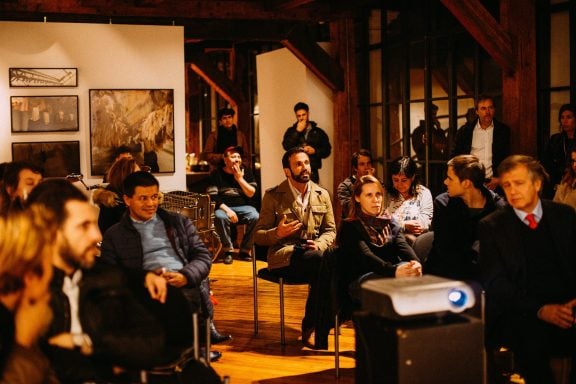Why Do Some People Tune Out Before a Speaker Gets to the Point?
I’m assuming that you are speaking to an audience of people who are there because they want to learn about your topic, that you have prepared an informative and engaging presentation, and that you want to engage the audience. However, even when all these things are true, some speakers lose a substantial proportion of the audience in the first few minutes simply because they have not structured their presentation appropriately.
How Learning Styles Affect Response
People absorb and synthesize information in four primary ways and most people use a combination of these styles. The four ways of learning include:
- Concrete experience;
- Abstract concepts;
- Reflective observation; and
- Active observation;
Each of these different learning styles will respond to information through a particular style of instruction so your presentation (especially your introduction) [LINK to article on Charisma Sequence] must be structured in such a way that you can engage people with all four learning styles and all representational systems easily and elegantly.
Successful speakers follow a carefully designed and researched pattern that helps them simultaneously engage people with diverse communication and learning styles. Some people have the benefit of teachers and parents who use this pattern, others learn it by consciously observing, analyzing, and modelling the example of the most influential speakers, yet others are fortunate enough to learn it quickly and easily through a course like the Tad James NLP Trainers’ Training.
Learning Styles and Presentation Sequence
Because the purpose of Neuro-Linguistic Programming (NLP) is to facilitate communication and learning, practitioners learn the skills and techniques which will enable them to engage constructively with people from all walks of life and all different styles of communication. As mentioned above, there are four primary learning styles and your audience will usually consist of a mixture of each style. Some of them are more impatient than others and if you don’t quickly engage these people they will lose interest and either tune out of a live presentation or switch off an online webinar. Clearly it is in your interest to understand and address each style in turn so that they all remain engaged.
People Who Learn from Concrete Experience & Discussion
These people are generally impatient. If you don’t address their need to understand the relevance of your information quickly they lose interest. They love to study life, to discuss causes and effects, and will often start (and continue) a conversation with the question “Why?” If you want to engage these people, you need to make it immediately clear why they need to understand your presentation and how it could impact their future. Even though you are presenting rather than discussing your idea you can begin with an interactive style that enters the conversation going on in their head.
People Who Learn from Reflective Observation and Experimentation
You will often notice that these people seem to be concentrating deeply on what you have to say, but they are unlikely to contribute much to discussion until they have time to reflect on the idea you are presenting. They are mostly concerned about the details of what you are saying and the process by which it can be implemented. In a live presentation, these people are busy taking notes.
People Who Learn from Active Experimentation and Self-Discovery
In a classroom, these are the people who are keen to practice what you are teaching and try it out for themselves. They may be interested in the idea behind the process, but their primary interest is in testing the steps leading to the outcome. They love exercises and step-by-step instructions followed by an opportunity to analyze what they have discovered in their practice. Often, these are the students who have lots of questions about why and what after they have completed the exercise.
People Who Learn from Self-Discovery and Discussion
These students will pay close attention to your explanation of the idea and its importance. They may tune out when you are explaining the process and are most likely to skip steps and follow rabbit trails in their practice sessions because they are busy thinking of other ways to reach the same end. Depending on your context, it may be important to emphasize the concept of mastering the core process before experimenting or changing it as these can also be the people who say, “It doesn’t work!” although they may not have given it a chance.
Structure Affects Engagement and Response
When your presentation addresses each of the learning styles in the appropriate order you will find that audience engagement increases dramatically and you will immediately see a substantial improvement in the outcomes of your presentation.
At the Tad James Company Trainers’ Training, a 16-day course that teaches all aspects of effective presentation through intensive practice and demonstration you will learn exactly how to structure every presentation for maximum effect, as well as other NLP techniques that will turn you into a bulletproof speaker who achieves their desired results.


